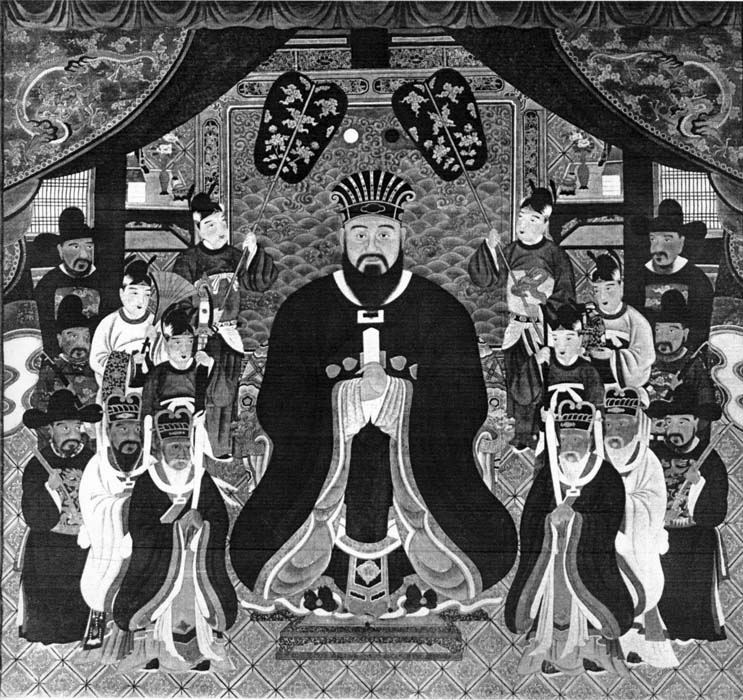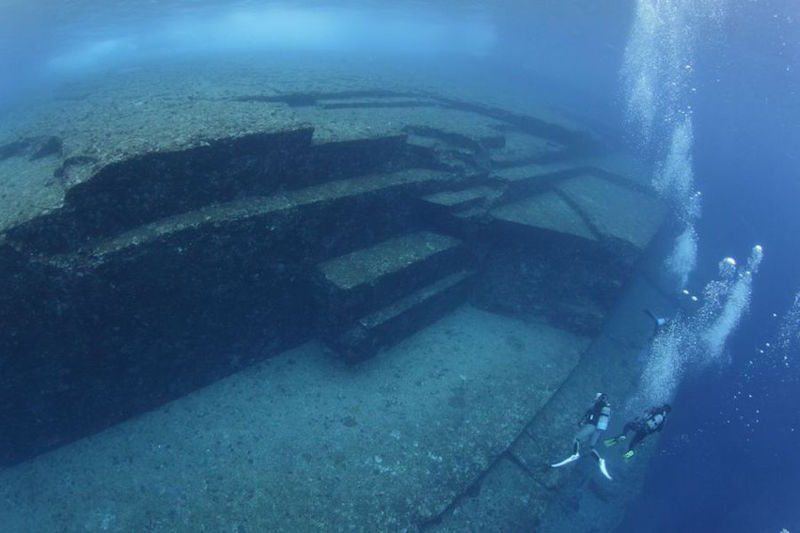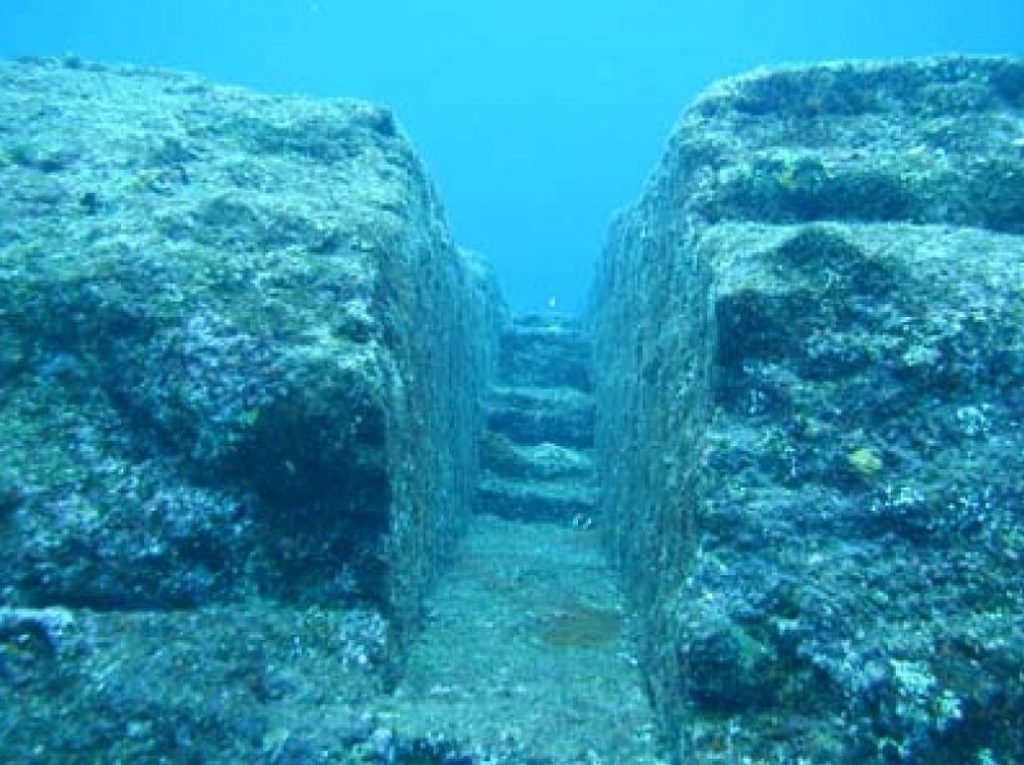Have you ever heard of the Yonaguni Monument? This enigmatic underwater structure, located off the coast of Japan, has been the subject of intense debate and speculation since its discovery in 1987. Some experts believe that the monument is a natural rock formation, while others argue that it is a man-made structure, possibly even a remnant of an ancient lost city.
In this article, we’ll explore the fascinating history of the Yonaguni Monument, examine the evidence for and against its artificial origin, and delve into the mysteries that continue to surround this underwater wonder.
The Yonaguni Monument: What is it?
The Yonaguni Monument is a submerged rock formation located off the coast of Yonaguni Island, the southernmost island of the Ryukyu archipelago in Japan. The structure is made up of a series of large, flat rocks that rise up from the ocean floor to a height of up to 30 meters. The rocks are arranged in a series of steps and terraces, and some have been carved into intricate shapes, including what appear to be steps, pillars, and walls.
The Yonaguni Monument was discovered by chance in 1987 by a local diver, Kihachiro Aratake. Aratake was exploring the waters around Yonaguni Island when he stumbled upon the strange rock formation. He immediately recognized that it was unlike anything he had ever seen before and reported his discovery to the authorities.
Since then, the Yonaguni Monument has become a popular destination for divers and researchers alike, who come to explore its mysteries and try to uncover the truth about its origins.
The Debate over the Yonaguni Monument’s Origin
One of the most intriguing aspects of the Yonaguni Monument is the debate over its origin. While some experts believe that the structure is a natural rock formation, others argue that it is a man-made structure, possibly even a remnant of an ancient lost city.
Those who support the natural rock formation theory point to the fact that the monument is located in an area that is known for its seismic activity. They argue that the rocks have been shaped over time by the powerful currents and waves of the ocean, which have eroded and carved them into their current form.
However, proponents of the man-made structure theory point to the intricate shapes and patterns carved into the rocks, which they argue could not have been created by natural processes alone. They also point to the fact that some of the rocks appear to have been cut and shaped using advanced tools, such as chisels and saws.
Despite decades of research and exploration, the debate over the Yonaguni Monument’s origin continues to rage on. Some experts have suggested that the only way to definitively prove whether the structure is man-made or natural would be to uncover evidence of human habitation or activity in the surrounding area.
Exploring the Mysteries of the Yonaguni Monument
Whether the Yonaguni Monument is a natural or man-made structure, one thing is certain: it is a fascinating and mysterious place that continues to captivate scientists, divers, and curious explorers alike.
Some researchers have suggested that the monument may be linked to the lost civilization of Mu, a legendary landmass that supposedly existed in the Pacific Ocean and was destroyed in a catastrophic earthquake. Others have speculated that the monument may be part of an ancient underwater temple, used for religious or ceremonial purposes.
Despite the lack of concrete evidence, the Yonaguni Monument has attracted the attention of a number of prominent scientists and researchers over the years, including marine geologists, archaeologists, and historians. Many of these experts have conducted extensive studies and investigations in an attempt to unlock the secrets of the monument and shed light on its origins.

One of the most intriguing theories about the Yonaguni Monument is that it may have been built by the ancient civilization of the Ryukyu Kingdom, which ruled over the Ryukyu Islands from the 15th to the 19th century. Some experts have pointed to similarities between the rock carvings at the Yonaguni Monument and the stonework found at other ancient Ryukyuan sites, such as the Nakagusuku Castle ruins.
Others have suggested that the monument may be linked to the underwater ruins of Nan Madol, a mysterious complex of stone buildings and canals located off the coast of the island of Pohnpei in Micronesia. Like the Yonaguni Monument, Nan Madol is thought to be the remnant of an ancient civilization, and both sites share similarities in their architecture and design.
Conclusion
The Yonaguni Monument is a unique and enigmatic place that continues to fascinate and mystify scientists, researchers, and divers from around the world. Whether it is a natural rock formation or a man-made structure, one thing is certain: it is a testament to the power and beauty of the ocean, and a reminder of the many mysteries that still lie hidden beneath the waves.
As our understanding of the Yonaguni Monument continues to grow, we may one day uncover the truth about its origins and significance. Until then, it remains a tantalizing and intriguing puzzle, waiting to be solved by those brave enough to explore its depths and unlock its secrets.
Frequently Asked Questions about the Yonaguni Monument:
Q: What is the Yonaguni Monument? A: The Yonaguni Monument is a submerged rock formation located off the coast of Yonaguni Island, Japan.
Q: When was the Yonaguni Monument discovered? A: The monument was discovered by chance in 1987 by a local diver, Kihachiro Aratake.
Q: Is the Yonaguni Monument man-made or a natural rock formation? A: There is still debate among experts over whether the structure is man-made or a natural rock formation




Comment here